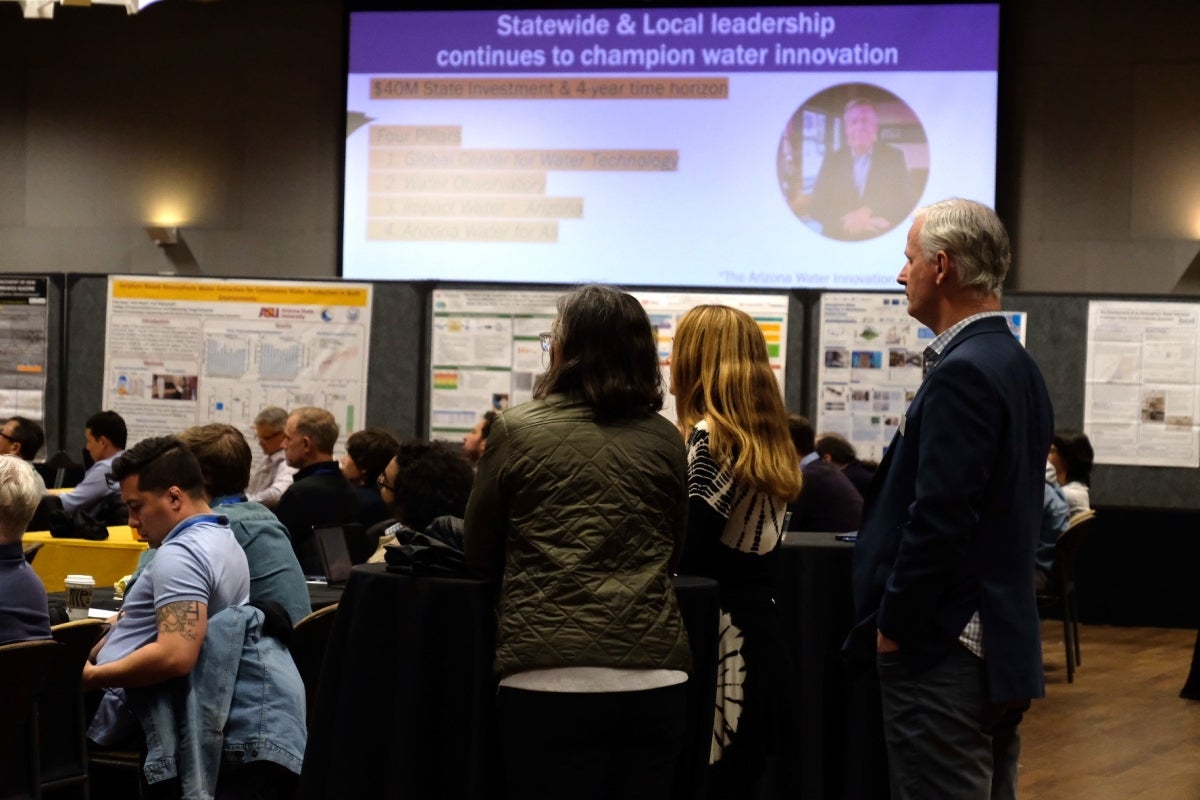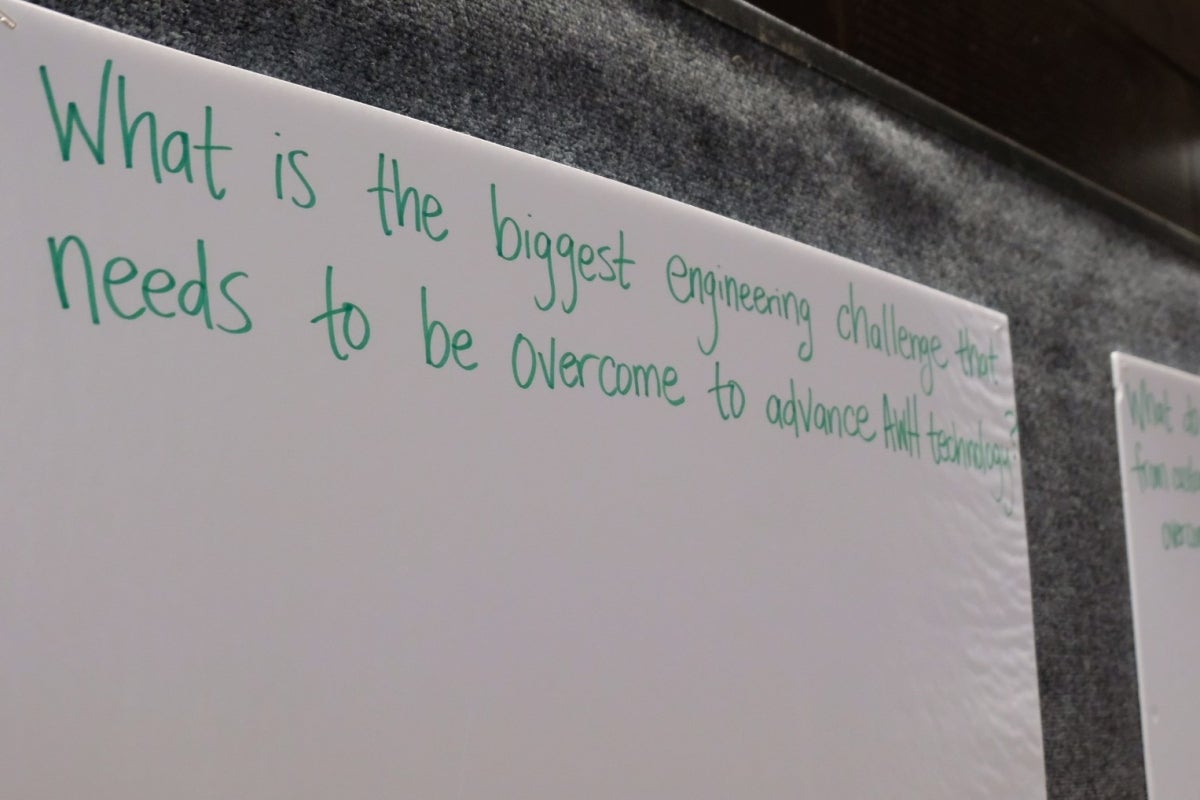ASU summit calls for innovations in atmospheric water harvesting technology

Photo courtesy Pixabay
As questions about water resources and access continue to build in the Southwest, some experts are turning to an unlikely place for solutions: our atmosphere.
Atmospheric water harvesting, a method of water collection that draws water from humidity in the air, offers a new pathway for water security.
Experts with a focus in areas such as engineering, hydrology, material science and thermodynamics gathered at Arizona State University this month for the Atmospheric Water Harvesting Summit — the first summit of its kind dedicated entirely to atmospheric water harvesting.
Paul Westerhoff, Regents Professor in the School of Sustainable Engineering and the Built Environment at ASU, the Fulton Chair of Environmental Engineering and director of Global Center for Water Technology, moderated the event.
He said that while atmospheric water harvesting technology has gathered interest from industries like health care, home appliances, semiconductor manufacturing, military and data centers, it is an underutilized area for progress.
“This has been the first international atmospheric harvesting summit — at the very least the first one of this scale — and this is an area that could really benefit from dedicated attention,” said Westerhoff, who is also a senior Global Futures scientist at the Global Futures Laboratory.
“Water is a human right. The question is: How can we get water in the right place at the right time, with the right quality? This is where atmospheric water capture technology can really shine.”
The Atmospheric Water Harvesting Summit was hosted by the Arizona Water Innovation Initiative, a statewide project led by the Julie Ann Wrigley Global Futures Laboratory in collaboration with Ira A. Fulton Schools of Engineering.
The initiative targets ASU’s industrial, municipal, agricultural, tribal and international partners to deploy new water conservation and efficiency technologies. The summit was organized by the Global Center for Water Technology, which is part of the Arizona Water Innovation Initiative.
The summit gathered water researchers, start-up entities, larger companies and other participants in atmospheric water harvesting. This diverse range of experts discussed the broad ranges of uses in this technology, ranging from drinking water to industrial water usage.
“It has been recognized for some time now that the southwestern region of the United States will have an increasing water problem,” said Peter Schlosser, vice president and vice provost of Global Futures at ASU. “The gap between demand and supply is increasing. If you want to ensure thriving futures and economies in the Southwest and other areas around the globe, the need for innovative water technologies is becoming more urgent.”
The summit featured experts in areas of material science and processing, in addition to in-practice methods of atmospheric water harvesting. Participants included representatives from groups such as Intel, PepsiCo, international universities and The Defense Advanced Research Projects Agency.
The summit concluded with a wrap up of action items, and the promise of continued conversations.
Westerhoff said the summit was a move in the right direction toward a more sustainable water future.
“There is immense opportunity for atmospheric water capture across all sectors,” he said. “As we continue to navigate water scarcity issues in Arizona, the greater Southwest and then around the world, more conversations will need to happen. This gathering has been an important start.”
Schlosser echoed the need for collaboration in the solutions space. He pointed to the Arizona Water Innovation Initiative as one example of positive change happening within ASU, with another example being the recently announced NSF Engines: Southwest Sustainability Innovation Engine, a U.S. National Science Foundation multi-institutional enterprise led by ASU.
These efforts amplify ASU’s dedication to water, engineering and sustainability solutions, and they are strengthened by continued collaboration and teamwork.
“Look at everyone who has assembled here,” Schlosser said in his opening remarks at the summit, addressing the crowd. “We need all kinds of expertise to properly address the greatest challenges of our time. We must form these kinds of networks and work together.”
More Environment and sustainability

Mapping the way to harvesting water from air
Earth’s atmosphere contains about 13 trillion tons of water.That’s a lot of water to draw upon to help people who are contending with drought, overtaxed rivers and shrinking aquifers.In fact,…

ASU researchers test environmental risks of tire emissions on Arizona highways
The Greater Phoenix area’s roadway grid system is the envy of urban planners everywhere, and the Arizona Department of Transportation, or ADOT, strives for nothing less than…

A 6-month road repair that only takes 10 days, at a fraction of the cost? It's reality, thanks to ASU concrete research
While Arizona’s infrastructure may be younger than its East Coast counterparts, the effects of aging in a desert climate have begun to take a toll on its roads, bridges and railways. Repairs and…




